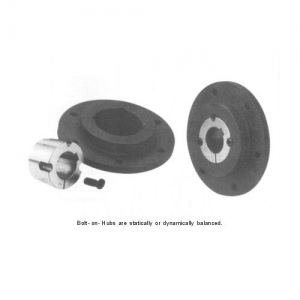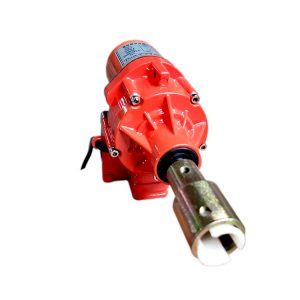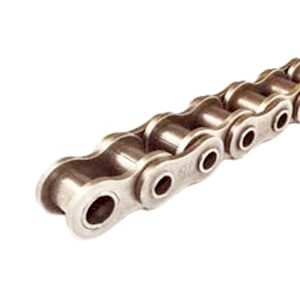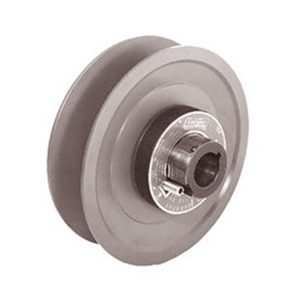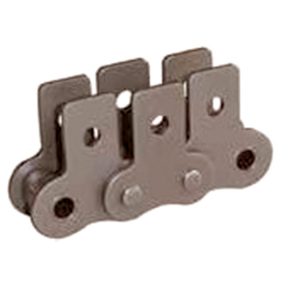Product Description
HangZhou CHINAMFG Hardware Products Co.,Ltd.
HangZhou CHINAMFG Hardware Products Co. Ltd., a leading CHINAMFG manufacturer in China since originally1995, specializes in manufacturing gate, door, windows and fence’s accessories, sliding gate pulley , hardware which is used for , swing gate, sliding cantilever gate, sliding door, folding door and electric retractable door, fence, farm etc.
HangZhou CHINAMFG Hardware Products Co. Ltd., has been certified to comply with ISO9001:2008 Quality Management System, BV(Bureau Veritas) and SGS.
We specialize in manufacturing: 1. Sliding Gate Wheel, remote sliding gate wheel, Sliding Gate Track, Sliding Gate Track Catcher. 2. Cantilever Gate Wheel, Cantilever Gate Channel, Gate End Stopper, Gate Stop, Xihu (West Lake) Dis. Roller Bracket, Gate Xihu (West Lake) Dis. Wheel, Adjustable Bottom Plate, End Cap for the Cantilever Gate. 3. Hanger Roller, Hanger Roller Channel 4. Nylon Roller, Steel Bracket with Nylon Roller. 5. Gate Latch; 6. Gate Hinge, Welding Gate Hinges, Hinges for Wooden Gate 7. Post Cap 8. Lock Body Case 9. Gear Rack: Nylon Gear Rack, Steel Gear Rack 10. Spring Box 11. Folding Door Accessoies etc.
Product Introduction:
Function & Applications: Sliding Gate Wheel With Bearings(Double Bearings, Y Groove): It is installed the gate. Sliding Gate Wheel is the most important hardware components that affect the quality of the merits of the quality of sliding gate, but also a direct impact on the life of sliding gate.
Material: Made of general Q235 steel give to quality and durability.
Surface Finish: Surface galvanized in silvery, yellow, multicolor, which make the wheels perfectly resistant to fight against rust and have a beautiful surface.
Diameter: The existing gate wheel diameter comes in 30mm, 38mm,50mm,58mm,78mm and so on.
Specification: as following:
| NO. | Dmm | d | H | Thickness | WEIGHT(g) |
| TH01A | 200 | 42 | 80 | 1 | 1235 |
| TH01B | 200 | 48 | 80 | 1 | 1228 |
| TH01C | 220 | 60 | 80 | 1 | 1168 |
| TH01D | 220 | 42 | 80 | 1 | 1177 |
| TH01E | 220 | 48 | 80 | 1 | 1170 |
Correlatives
The sliding cantilever gate wheel are matching sliding gate channel, sliding cantilever gate guider wheel, sliding cantilever gate end stopper, sliding cantilever gate end cap, sliding cantilever gate adjustable bottom plate which we are supplying.
If any interests, please give me a message for more details, thank you!
| Type: | Sliding Gate Wheel |
|---|---|
| Material: | Steel Q235 |
| Color: | Galvanized White or Yellow |
| Function: | Sliding Gate Wheel |
| Install: | Very Easy |
| Delivery Date: | 8-20 Days |
| Samples: |
US$ 10/Piece
1 Piece(Min.Order) | |
|---|
How does the diameter of a pulley affect its mechanical advantage?
The diameter of a pulley plays a significant role in determining its mechanical advantage. Mechanical advantage refers to the ratio of the output force or load to the input force or effort applied to the pulley system. Here’s how the diameter of a pulley affects its mechanical advantage:
1. Larger Diameter: When the diameter of a pulley increases, the mechanical advantage also increases. A larger diameter means that the circumference of the pulley is greater, allowing a longer length of rope or belt to be wrapped around it. As a result, a larger pulley requires less effort force to lift a given load. This is because the load is distributed over a greater length of rope or belt, reducing the force required to overcome the load.
2. Smaller Diameter: Conversely, when the diameter of a pulley decreases, the mechanical advantage decreases. A smaller diameter means that the circumference of the pulley is reduced, resulting in a shorter length of rope or belt wrapped around it. As a result, a smaller pulley requires more effort force to lift a given load. This is because the load is concentrated over a shorter length of rope or belt, requiring a greater force to overcome the load.
It’s important to note that while a larger diameter pulley offers a greater mechanical advantage in terms of reducing the effort force required, it also results in a slower speed of the load being lifted. This is because the longer length of rope or belt requires more input distance to achieve a given output distance. On the other hand, a smaller diameter pulley offers a lower mechanical advantage but allows for a faster speed of the load being lifted.
The mechanical advantage of a pulley system can be calculated using the formula:
Mechanical Advantage = Load / Effort
Where “Load” refers to the weight or force being lifted and “Effort” refers to the force applied to the pulley system. By adjusting the diameter of the pulley, the mechanical advantage can be optimized to suit the specific requirements of the application, balancing the effort force and speed of the load being lifted.
Can pulleys be employed in agricultural machinery and equipment?
Yes, pulleys can be employed in agricultural machinery and equipment to facilitate various tasks and improve efficiency. They are versatile components that provide mechanical advantage, enable power transmission, and aid in the movement and control of agricultural implements. Here’s how pulleys can be used in agricultural applications:
1. Belt Drives: Pulleys are commonly used in belt-driven systems in agricultural machinery. They are used in conjunction with belts to transmit power from the engine or motor to different components, such as pumps, fans, and cutting mechanisms. By adjusting the size and arrangement of the pulleys, farmers can control the speed and torque of the driven equipment, optimizing its performance for specific tasks.
2. Harvesting Equipment: Pulleys are utilized in various types of harvesting equipment, such as combines, forage harvesters, and balers. They are employed in the cutting and threshing mechanisms to transfer power and drive the rotating components. Pulleys enable the synchronization of different parts, ensuring efficient crop harvesting and processing.
3. Irrigation Systems: Pulleys play a role in agricultural irrigation systems, particularly in the operation of water pumps. They are incorporated into the pump drive systems and help transfer power from engines or motors to the pump impellers. By using pulleys, farmers can adjust the pump speed and flow rate to meet the irrigation requirements of different crops and soil conditions.
4. Hay and Forage Equipment: In hay and forage equipment, pulleys are utilized to drive various components, such as cutting blades, conditioning rolls, and feed mechanisms. They enable the transfer of power from the tractor or engine to these components, facilitating efficient cutting, processing, and feeding of hay and forage materials.
5. Conveyor Systems: Pulleys are employed in conveyor systems used in agriculture for material handling tasks. They help drive the belts or chains that transport crops, grains, or other agricultural products. Pulleys ensure smooth and controlled movement, enabling the efficient transfer of materials between different stages of processing, storage, or transport.
6. Livestock Equipment: Pulleys find applications in livestock equipment, such as feed mixers, milking machines, and ventilation systems. They are used to transfer power and facilitate the movement of various components involved in these systems. Pulleys contribute to the smooth operation and automation of livestock processes, enhancing productivity and animal welfare.
7. Equipment Adjustments: Pulleys are also employed in agricultural equipment to provide adjustability and flexibility. They enable the adjustment of cutting heights, belt tension, and machine settings, allowing farmers to adapt the equipment to different crops, field conditions, or operational requirements.
Overall, pulleys play a significant role in agricultural machinery and equipment, enhancing power transmission, enabling precise control, and improving the overall efficiency of agricultural operations. Their versatility and adaptability make them valuable components in various agricultural applications.
What are the advantages of using pulleys for mechanical advantage?
Using pulleys for mechanical advantage offers several advantages in various applications. Here are the key advantages:
1. Increased Lifting Capacity: One of the primary advantages of using pulleys for mechanical advantage is that they allow for the lifting of heavier loads with less effort. By distributing the load over multiple segments of rope or belt, pulleys reduce the amount of force required to lift the load. This is especially beneficial in scenarios where manual lifting or limited power is involved.
2. Easier Load Manipulation: Pulleys make it easier to manipulate and control heavy loads. The mechanical advantage provided by pulleys reduces the force needed to move or lift the load, allowing operators to exert less effort. This makes tasks such as lifting, lowering, and positioning heavy objects more manageable and less physically demanding.
3. Safety and Injury Prevention: By reducing the amount of force required to lift heavy loads, pulleys contribute to improved safety and injury prevention. When operators have to exert less physical effort, the risk of strains, sprains, and other lifting-related injuries is significantly reduced. Pulleys enable controlled and smoother load movement, minimizing the risk of sudden shifts or drops that could cause accidents.
4. Precise Load Positioning: Pulley systems provide precise control over load positioning. By using multiple pulleys and adjusting the tension in the rope or belt, operators can achieve precise vertical and horizontal movements of the load. This level of control is particularly valuable in applications that require accurate placement of heavy objects, such as construction, manufacturing, and material handling.
5. Versatility and Adaptability: Pulleys offer versatility and adaptability in various applications. They can be configured in different arrangements and combinations to achieve specific mechanical advantages based on the requirements of the task or load. Pulleys can be easily integrated into existing systems or incorporated into custom-designed setups, making them highly adaptable to different situations.
6. Efficient Power Transmission: Pulleys provide efficient power transmission in mechanical systems. They enable the transfer of rotational motion and force from one component to another with minimal energy loss. The use of pulleys allows for the optimization of power transmission, ensuring effective utilization of available power sources.
7. Cost-Effectiveness: Using pulleys for mechanical advantage can be cost-effective compared to alternative methods. Pulleys are relatively simple and economical devices that can be readily obtained. They require minimal maintenance and have a long operational lifespan. Additionally, pulley systems can often be designed and implemented without the need for complex and expensive equipment.
In conclusion, using pulleys for mechanical advantage offers advantages such as increased lifting capacity, easier load manipulation, safety and injury prevention, precise load positioning, versatility, efficient power transmission, and cost-effectiveness. These advantages make pulleys a valuable tool in a wide range of industries and applications.
editor by CX
2023-12-11











